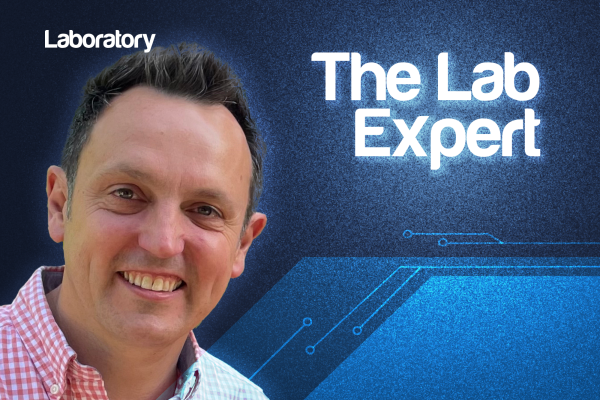
This shift to automation in dental labs is inevitable, says Ashley Byrne. However does it threaten the way forward for dental technicians, or is it a possibility we must always embrace?
Because the dental expertise panorama evolves at breakneck velocity, one query I’ve seen beginning to seem is, ‘is full automation within the dental lab a dream we must always chase – or a risk to what we’ve spent years constructing?’
Having seen the large leaps in automation on show at LMT Lab Day in Chicago and IDS in Cologne this yr, it’s clear: this shift isn’t a risk anymore – it’s an inevitability. From robotic arms loading printers to AI design instruments spitting out casework in seconds, the way forward for dental lab manufacturing is being redefined earlier than our eyes, whether or not we prefer it or not.
Nevertheless, as with all revolution, there are rising pains. For dental lab house owners navigating this new world, the secret’s discovering the stability between embracing innovation and preserving the artistry, instinct and human connection that outline the fashionable dental lab.
Automation: the case for the dream
Let’s begin with the simple benefits of automation. Fashionable dental labs are beneath rising stress: sooner turnaround occasions, increased expectations from clinicians, and a worldwide decline in expert dental technicians.
Recruitment pipelines are non-existent and drastically worse post-Brexit, coaching is commonly sluggish, and retirements are accelerating. On this context, automation won’t simply be a possibility – it could possibly be our solely lifeline.
By eradicating the repetitive, time-consuming duties from a technician’s each day workload – mannequin prep, fundamental design, nesting, manufacturing – labs can redeploy their proficient staff into much less mundane roles.
Expert technicians can deal with the artistry of anterior restorations, the nuance of advanced implant circumstances, and the relationship-led communication that builds lasting belief with clinicians. AI-driven CAD instruments can design crowns, bridges and implant frameworks with exceptional velocity and consistency.
Automated nesting, milling and printing workflows cut back human error and permit manufacturing to proceed in a single day – an unthinkable feat within the conventional mannequin.
However what will we lose?
But, for all of the promise, full automation additionally stirs discomfort. Is the position of the dental technician slowly being changed? Will artisanal craftsmanship, honed over many years, be decreased to a checkbox in software program?
Right here’s my tackle it: whereas automation can replicate construction, it struggles with what a technician actually does and delivers. Aesthetic work—particularly anterior restorations—requires an eye fixed for element, color, texture, and concord with the affected person’s character. These are qualities born from expertise, not algorithms. Then there’s the intangible component of belief. Dentists typically construct long-term relationships with lab technicians who “just get it” – who perceive their preferences and adapt with them over time. Can a machine replicate that form of relationship? Not but. Labs that go all-in for automation and not using a considerate integration plan, danger diluting their distinctive worth proposition. The chance isn’t simply producing lower-quality work—it’s changing into indistinguishable in a crowded market and if we let this occur, everybody’s enamel with look the identical and all remedies will likely be handled in the identical manner. None of that’s within the sufferers curiosity in anyway.
AI design instruments: assistant, not substitute
Synthetic Intelligence (AI) is maybe probably the most disruptive drive in dental tech proper now. Techniques just lately launched, like exocad’s and 3Shapes AI-assisted design modules or automated smile design software program, are more and more subtle. They be taught from huge datasets to foretell excellent tooth shapes, contours, and occlusion patterns. However right here’s the nuance: AI needs to be seen as an assistant, not a substitute. Like a co-pilot, it might probably assist much less skilled technicians’ full advanced designs extra confidently and allow senior techs to hurry up their workflow with out compromising on high quality. Ahead-thinking labs are utilizing AI to advance talent—not diminish it. As a substitute of changing technicians, they’re up skilling them to develop into digital overseers, liable for supervising, tweaking, and approving AI-generated work. This preserves high quality whereas rising capability—a robust mixture which so few in our trade are getting near mastering.
Putting the stability
So, how do lab house owners navigate this digital transformation with out dropping our soul?For me, the reply lies in a hybrid resolution—a mix of tech-enabled effectivity and human experience. Automation ought to deal with the repetitive, rule-based duties: mannequin preparation, tough design, nesting, milling. Your technicians ought to deal with high-value areas: shade matching, aesthetic layering, case planning, consumer communication.In truth, this can be the one viable manner ahead. As our trade faces a dwindling workforce, we should prioritise our remaining expertise for the roles solely people can do—those who require emotional intelligence, creativity, and relationship-building. By eradicating the mundane, we shield the significant.
Future-proofing by mindset, not simply equipment
Lastly, automation is not only about shopping for the precise package—it’s about cultivating the precise tradition.Investing in digital instruments is straightforward. However making a staff that’s open to vary, hungry to be taught, and adaptable within the face of recent tech—that’s the true differentiator. Common CPD, collaborative decision-making, and clear communication about “why” you’re implementing automation, are key to bringing your staff together with you on the journey. The labs that view automation as a collaborative drive, not a risk, will form the way forward for the trade—not be formed by it.
Conclusion
Full automation within the dental lab is neither an inevitable dream nor an existential risk. It’s a robust software—one which, when used properly, can elevate your lab’s capabilities and free your staff to deal with what they do greatest.
However the coronary heart of dental expertise has at all times been human. Machines could possibly copy construction, however they’ll’t but replicate the judgement, finesse, and emotional intelligence of a talented technician.
So moderately than ask, “Will automation replace us?” maybe the higher query is: “How can we use it to become even better?”


